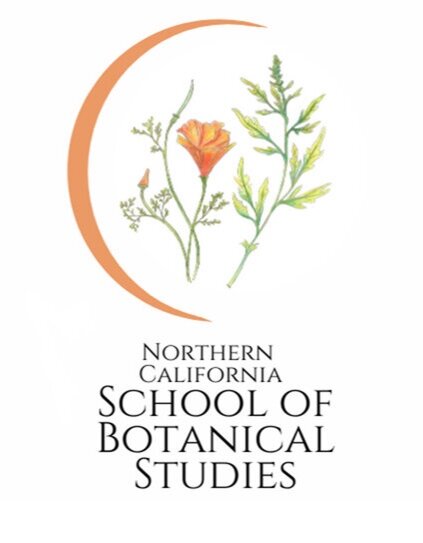The importance, as an herbalist, of distinguishing native vs non-native plants
When working with plants, its important to get to know them deeply, including their place in this world- how they grow through the seasons, the environment they like to thrive in, and environments they will tolerate. I have always kept a file in my mind of trying to know what is native vs. non- native in the areas I live. There is so much value to this one discrimination as an herbalist.
If a plant is native, it is indigenous to that area and has evolved along with that ecosystem. This means that as it has evolved into its present state, it has done it alongside the other plants, animals and fungi that are also indigenous to that area. It has native pollinators that it depends on for reproduction, and therefore animals and insects that depend on it as a food source, maybe even as a primary food source. It has co-evolved with the plants around it and may have a dependency or may have other plants that are dependent on it for shade, substances that are secreted through the roots, and so many other symbiotic relationships that we don’t even know yet. Plants that are native also have a symbiotic relationship with the indigenous people who have lived there, possibly for thousands of years. A relationship where they may have (and still do) tended its growth, and also used it for various things such as food, medicine, crafting, and building.
The native categorization can change from state to state, but really due to ecosystem. Therefore, plants that are native to the eastern US, are not necessarily native to the western US, and may even be invasive in that area.
When a plant is not native, it is not indigenous to that area. While it has evolved in another environment, again, along with many other species in which it has a balance, it has been introduced, usually, due to the movement of humans. The concern with non-native plants in areas is that they may compete with the native plants, and even take over, stressing the habitat and native population. If they out compete some native plants, this could impact the entire ecosystem, reducing or threatening other species that depend on that plant. When a plant is considered ‘invasive’ the rate at which it spreads does make it a threat to native species.
As an herbalist, I want to distinguish between the two to better understand how I need to approach the plant for harvest. By knowing that a plant is native to an area, I can have that additional respect of wanting it to continue to thrive in the place it lives. I would also want to know its population density and if there are any concerns of it being threatened. Of course, I would only harvest in areas of abundance, but I will also note other plants in the area and what the ratio seems to be between them. I will also appreciate any information on animals, plants and other species that may depend on them. I also like to consider that the native plants have been used for a long time by the people who are also native to that area. Knowing all of these things enables a certain depth of respect that I prefer, and believe is necessary to consider the plants with.
When I know that a plant is not native, I do have different thoughts about my approach. While I have a very sacred respect for all plants, and especially any that I work with, I can also know that the non-native plants may be a threat to others, or it may not at all (another reason to know your plants). However, when I work with invasive medicinals, I appreciate the abundance that I can usually harvest. I do know that if they are invasive, I can take larger quantities and not have much of an effect on the population. I know that they spread very easily and may overtake other native plants, so I will harvest more around those. It’s important to note that non-native and invasive are not synonymous. Some non-native plants grow in areas without being a threat with overgrowth.
Approaching plants with this information makes all of the difference in truly sustainable harvesting. The more knowledge we can know about each plant and the role it plays in each ecosystem is crucial in working with them in a way that supports all life.
California poppy, Eschscholzia californica

